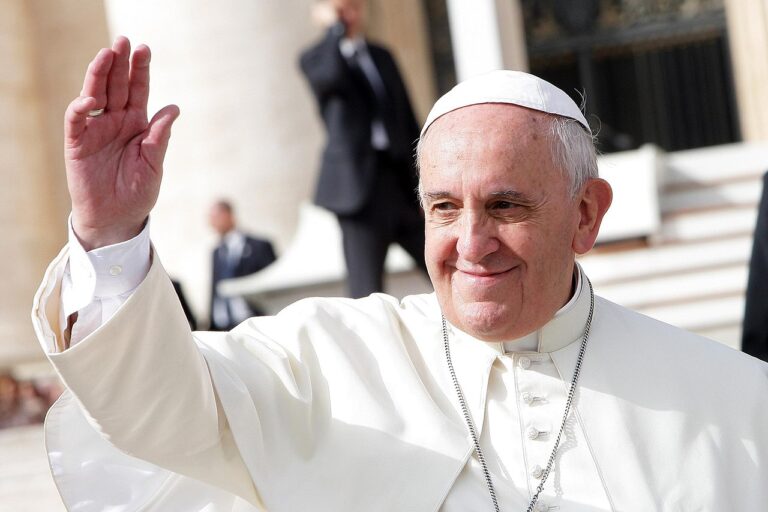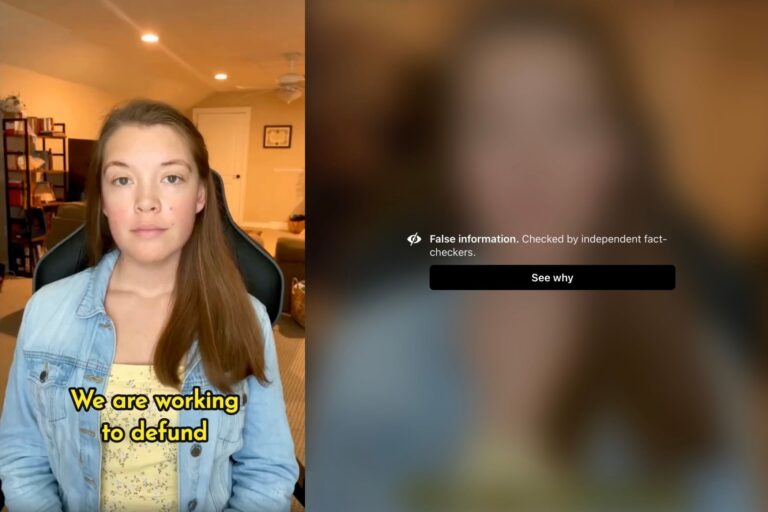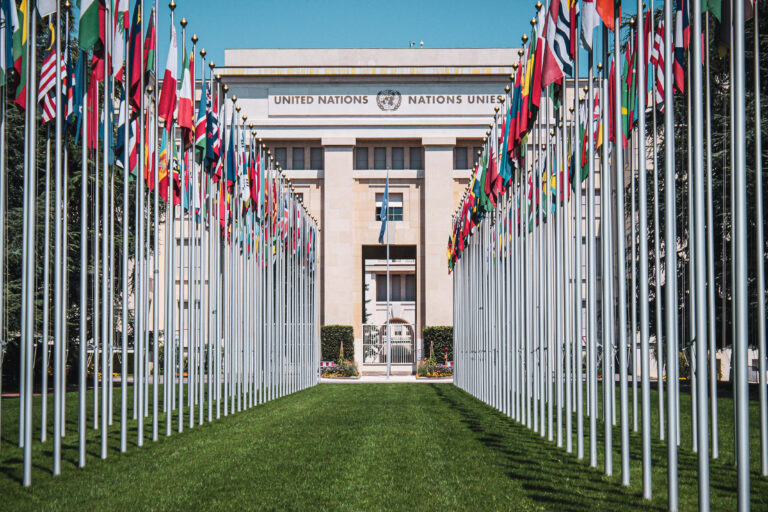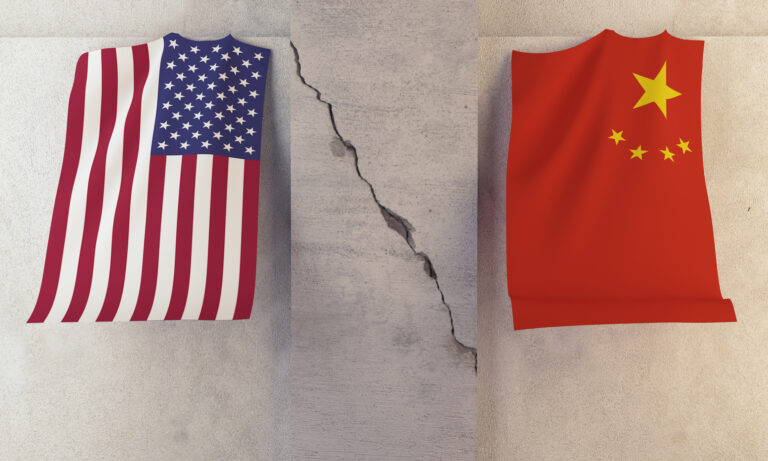Chill winds of fear sweep the Netherlands as euthanasia unveils itself like a thief in the night.
The debate on the issue of euthanasia is now going on in many countries including the United States, but only in Holland is active euthanasia, injecting sick people with drugs that cause death, widely and openly practiced. What does it mean for the people involved, and for all people, and has the practice of euthanasia changed the medical profession and the society?
Euthanasia in Holland
At present, Holland is the only place you can look for answers to these questions. But the truth about Dutch euthanasia has long been the subject of controversy.
The defenders of euthanasia, in particular in the United States, say, “Look, Holland is a democratic nation of decent, reasonable people. They have allowed active euthanasia and this has now been going on some twenty years with no bad consequences whatsoever. Euthanasia in Holland is not formally legalized, but the official guidelines strictly regulate the practice and provide good safeguards against abuse. The freedom and the rights of people have been expanded; they include now the choice of death, and the dying patients who are in intractable pain can now be put out of their misery.”
However, the critics of Dutch euthanasia always asserted that it is practiced on a very large scale, not only in terminal cases, but also on people with various chronic ailments and with psychological disorders. It is also believed that many doctors arbitrarily terminate without patients’ request, consent, or knowledge; and that irregularities and misdemeanors are rather the rule than the exception. The critics have also alleged that euthanasia frightens whole groups of the population, and corrupts the legal system, family ties, and the whole fabric of society. Which picture is true?
Government committee’s report
The controversy around Dutch euthanasia is now resolved. In 1990, the committee (Committee to Investigate the Medical Practice Concerning Euthanasia) appointed by the Dutch government ordered a nationwide survey of the practice of euthanasia. Very reliable methods of study were adopted and the researchers working for the committee have taken every effort to obtain full and truthful information.
When the committee’s report was released on 10 September 1991, in two volumes, it immediately became clear that it contained the most valuable and extensive information on Dutch euthanasia today. Now there is no more controversy about the facts. And which side in the debate proved right? Has the report shown that the situation is worse than the opponents of euthanasia ever suspected? Here I want to pay tribute to the Dutch researchers. The people who did this study and members of the governmental committee support euthanasia. They have tried to reduce the impact of the report by including some reassuring comments and conclusions. They showed honesty and courage by publishing all the findings however alarming they turned out to be.
How many people die by euthanasia in Holland every year? To calculate from the report, we have first to agree on the definition of euthanasia. There are good grounds to adopt a descriptive definition which includes all essential forms of euthanasia. Professor Joseph Fletcher, who is deceased, and was a prominent advocate of euthanasia, proposed the definition that I present here in my own wording. Euthanasia means deliberately causing the death of a person either by action or by omission with or without the request of the person involved, and with the professed aim of sparing that person the suffering of illness or an imperfect life.
Every fifth person euthanized
When we apply Fletcher’s definition to the data supplied in the Dutch report, we see that the number of people who died by euthanasia in the Netherlands total more than 25,000 a year. This is 19.4 percent of all deaths. In other words, every fifth person in the country dies of euthanasia. The total figure of 25,000 cases must be supplemented by a presumably not very large number of handicapped newborn, sick children, psychiatric patients and patients with AIDS, as, according to the report, termination of life is practiced in these cases as well, but no quantitative estimates have been obtained.
Twenty-five thousand cases of euthanasia a year is a huge number. Holland’s population is now 15 million. If euthanasia occurred in America with the same frequency as in Holland, this would amount to 400,000 cases of euthanasia in a year for the United States. In 13,000 cases, passive euthanasia has been performed which means the death was caused by withholding or withdrawing life saving treatment. In 12,000 cases, active euthanasia was carried out, that means the patients were killed by administering drugs which caused cardiac respiratory arrest. If active euthanasia were practiced in America with the same frequency, it would amount to 190,000 cases of active euthanasia a year for the United States. As a consequence of the report of the governmental committee, euthanasia will not be legalized in Holland.
This report contains many other very interesting data. In 1990, the year when the study was done, the Dutch doctors rejected 6,700 requests for euthanasia, which indicates, in the committee’s opinion, that such requests are seriously considered and not too easily granted. However, according to a parallel study, when the request for euthanasia is granted, in 59 percent of the cases euthanasia is carried out on the day of the request, and within one hour of the request in 11 percent of the cases. This suggests an unseemly haste rather than a dutiful consideration.
Euthanasia is not limited to patients in terminal condition. According to the doctors’ own assessments, in 21 percent of the cases euthanasia shortened the patients’ lives by one to six months; in eight percent of cases, by more than six months. Further, the handicapped newborn babies and the psychiatric patients are certainly not terminal, and yet, euthanasia is practiced in these cases.
Euthanasia without consent
According to the data published in the report, 14,691 people died in 1990 by involuntary euthanasia, which means the suspicions that doctors had arbitrarily cut short patients’ lives were justified. When this occurred in the hospital, in 45 percent of the cases, euthanasia was carried out not only without the knowledge of the patients but also without the knowledge of the family.
The death of 8,750 persons was caused by withdrawing life-prolonging treatment without the patients’ knowledge. And the lives of 5,941 persons were actively terminated without the involved persons’ consent or knowledge by administering lethal injections. Fourteen hundred persons who underwent active, involuntary euthanasia were fully competent. In 8 percent of the cases, the doctors proceeded to perform active involuntary euthanasia while they believed that other courses of action were still possible. “Low quality of life,” “no prospect of improvement,” and “the family could not take it any more” were among the most frequently cited reasons to terminate the patients’ lives without their consent.
So it happens in Holland that when a person is admitted to a hospital, which they are supposed to trust, a doctor will evaluate the quality of his life, will make up his mind, and without asking the patient whether he wishes this or not, will give him an injection which stops the breathing and the heartbeat. One Dutchman out of 22 dies in this way. The report of the governmental committee is the first official acknowledgment that involuntary euthanasia is practiced in Holland.
Let’s make it clear, some of the patients whose lives were cut short without their consent or knowledge were incompetent, some were unconscious, others were not. Some of them were competent. The number of fully competent, not partially, but fully competent patients who, according to the doctors themselves, could well evaluate their own situation and make decisions, and in spite of that were not asked about their own wishes and lives, totaled 1,474. These patients underwent involuntary euthanasia — 1,474 fully competent people who never asked for it, never required it, never requested it, and did not know it.
Guidelines widely disregarded
The report of the governmental committee is the first official acknowledgement that involuntary euthanasia is practiced in Holland, not as some sporadic act committed by outcasts, but as part of regular medical practice. The report also showed that the rules of so-called careful conduct officially accepted as guidelines for euthanasia are widely disregarded by the physicians. In cases of voluntary euthanasia, 19 percent of the general practitioners disregard the rule to consult another physician. And 54 percent do not record the proceedings in writing, as required by the rules. Sixty percent of the general practitioners do not consult another physician before carrying out involuntary active euthanasia. On the death certificates, 72 percent of the doctors conceal the fact that the patient died by voluntary euthanasia. In cases of active involuntary euthanasia, the doctors, with a single exception, never stated the truth on the death certificates. The total number of cases in which the death is deliberately hastened by action or omission, is perhaps the most striking finding published in the report. There were 130,000 deaths in Holland in 1990. Of these, 43,000 people died suddenly due to accidents or sudden cardiac death, and this precluded any medical decisions about the end of life in the wording of the report. Of the remaining 86,700 non-sudden deaths, in about 49,000 cases (which is 56.5 percent!) the physicians made decisions that possibly or actually shortened the patients’ lives. This figure exceeds all previous estimates.
As a consequence of the report of the governmental committee, involuntary euthanasia will not be legalized in Holland. The government has renounced the idea. Indeed, involuntary euthanasia turned out to be a significant part of the practice, and a law permitting the continuation of this practice would be incompatible with the Dutch legal system.
Fear and uncertainty
What is happening to the society which has embraced euthanasia? Of course, life and work go on very much as usual. You shouldn’t imagine that there are horrors seen in the streets of Dutch cities. It’s not apparent at first glance. It takes some insight to perceive the future danger even now. But change there is. In general, you can say that the message society sends to its members is changed now. Instead of the message humane society sends to its members, “everybody has the right to be around, we want to keep you with us, every one of you;” the society that has accepted euthanasia tells its people, “we wouldn’t mind getting rid of you.” And this message reaches not only the elderly and the sick, but all the weak and dependent.
As a consequence, some groups live in fear and uncertainty. The Dutch Patients’ Association (DPA) stated in 1985, “The fear of euthanasia among people has considerably increased.” Now the DPA operate a hotline for anxious patients and families, and this line is very busy every day. A group of severely handicapped adults from Amersfoort wrote in their letter to the Parliamentary Committees for Health Care and Justice, “We feel our lives threatened… We realize that we cost the community a lot.… Many people think we are useless… often we notice that we are being talked into desiring death .… We will find it extremely dangerous and frightening if the new medical legislation includes euthanasia.”
There were several reports that out of fear of euthanasia, elderly people refused to be placed in old-age and nursing homes, refused to be admitted to hospitals, or to see doctors or to take medicines. A study of the elderly done by Segers showed that 47 percent of those living in their own homes, and as much as 93 percent of those living in the homes for senior citizens, oppose euthanasia “because later on when they won’t be in command of the situation any more, their lives, against their will, will be put to an end by others.”
Pathetic attempts are made to protect oneself from imposed medical death. The Sanctuary Association printed “Declaration of the Will to Live” cards which anyone can carry on his person stating that the signer does not wish euthanasia performed on him. You can buy such a card for two guilders fifty, which is about one dollar and 30 cents, and fill it in.
Since euthanasia has become an option, it is now up to every disabled and dependent person to justify his staying alive. It is now he who owes an explanation to his attendants, to the community, to his own family. And this is being clearly felt at the unavoidable turning points when his condition deteriorates, or as new and unpleasant chores are required of his attendants, or when there is a shortage of nursing staff.
Many fear their families
When analyzing the changed public scene, Attorney General Schalken, one of the members of the governmental committee, slated in 1984, the elderly now feel under obligation to talk about euthanasia, and even feel obliged to request it. A change has already occurred in the way some people view their own families. Indeed, in a society which embraces euthanasia, the families are no longer the beings who enrich our lives, lend it scope, purpose, and meaning.
A study conducted among patients showed that many fear their own families because these are the people who decide upon euthanasia or pressure the patient to request it. There is an uncomfortable awareness that if a doctor arbitrarily cuts short your life, he would get away unpunished. The impunity of involuntary euthanasia means that the articles of the Dutch Constitution protecting life and person have been de facto suspended. Those passports for life, the pitiful papers saying that the signer does not wish to undergo euthanasia, show that for protection of their lives, people can no more rely on the rule of law.
More change must be expected if the pro-euthanasia movement is to achieve the rest of its proclaimed goals. When the present practice of euthanasia on handicapped newborns is legalized and, practically speaking, it is permitted, if not legal, this will mean the doctors, acting as they do everywhere under state supervision, will issue some newborn citizens permits to live while destroying the lives of others. To exist, a human being will have to be approved by the government which is a reversal of the democratic principle that the governments, in order to exist, have to be approved by the people.
Compulsory euthanasia
Compulsory euthanasia for the demented elderly, as advocated by some in Great Britain and discussed very broadly by the Royal Society of Medicine, is presently practiced on a small scale in Holland. This practice is limiting the life span of people by denying medical help to those above a certain age, just as proposed in the United States by a well-known governor and a few other people.
Any measures to eliminate large numbers of citizens from society — voters, life-long taxpayers, living people — are incompatible with our present system of government.
This does not mean that these programs will not be put into effect. Indeed, some already are. But it does mean that the implementation of euthanasia programs will involve an essential change in the system of government now prevailing in Western nations. Democracy will not protect us against this danger. Democracy will disappear. There is no democracy where everybody has the right to vote but not everybody has the right to live.
Euthanasia in U.S.
Hearing the news from Holland, people ask with apprehension whether euthanasia will come to the United States. But it has already come: by courts’ orders unconscious persons are starved and dehydrated to death. Heretofore, we used to admit that we were helpless at the bedside of a protractedly unconscious per son, that we had no solution; and there was none. The truth is that we cannot do anything, we can only wait; and we used to wait and shield the patient, trying to hope. Now it is claimed that there is a solution; when we destroy the patient, the problem ceases to exist.
We also used to acknowledge that, with very few exceptions, we did not know which unconscious patients might eventually recover. At present, verdicts of “irreversible coma” are pronounced with certainty that admits no doubts. The Hippocratic medicine’s truthful, modest attitude has become obsolete. Instead, a new ethic is proclaimed, that of self-assured expediency.
Law and medicine
There is still another aspect of this situation that deserves attention. Doctors are now told by judges when to stop treating their patients. Some of them are ordered to act against their professional judgment. Now, of course, we all have to live under the law. However, we should realize that law and medicine are governed by different principles and defend different values. Law and medicine are the two great achievements of our civilization. We should try to prevent the one from overwhelming and destroying the other.
Unconscious persons are now directly threatened with euthanasia. Meanwhile a pro-euthanasia shift in public opinion is being promoted. The Dutch proponents of euthanasia emphasize that making the issue debatable was the first decisive step on their way to victory.
The next stage
In the United States, euthanasia became debatable long ago. Next is “the maelstrom”, i.e., the “rapids” in Dutch terminology. This has already begun in the United States. Key media are approached and easily won. The readiness of the media to pick up the subject of euthanasia is understandable. It is in the nature of the media to seize upon genuine news. “Thou shall not kill” was news 3500 years ago. It isn’t anymore. Legally justified, morally approved killing is news.
Test cases of “mercy killing” are boldly publicized. Terrible examples that strike at the imagination, such as the man paralyzed from his neck down who managed to set his own bed on fire, are cited to convince the public of the necessity of euthanasia. We know it is improper to use uncommon cases to promote change that will affect millions of people and the society as a whole, but this kind of argumentation helps to mold the public opinion. Horrific hospital scenes are depicted, and the language used describes “people slumped in wheelchairs,” “decaying bodies,” etc., invokes not sympathy but revulsion; a feeling that the world should be rid of such abominations. Unconscious persons who stay alive are called “biologically tenacious,” as if they were not people whom we cherish, whose illness pains us, but noxious creatures, resistant to insecticides.
The lives of the handicapped newborn and of severely disabled persons are verbally abused and devalued. Their very humanity is questioned so as to make euthanasia an imperative. They are “monsters,” “post-human beings,” “still a person or only a thing?” Those are the words of the late Professor Joseph Fletcher.
A violent attack is directed against people who do their best to assist fellow humans in distress. Not the death and disease itself, but doctors and their machines are accused of being the enemies of mankind. Curiously, this has not prevented some doctors from joining the pro-euthanasia campaign. The “right to die” is forcefully emphasized, as if it were indeed a right and not a sad necessity.
The theme of dignity is widely exploited. We are told that to be assisted by medical technology involves loss of dignity. As if the dignity of honest, caring, courageous people — our parents, our spouses — could be somehow drained out of them through medical devices. We are also told that one way to die in dignity is to let oneself be killed by a professional!
A special soothing language is used to make it easier for the public to accept euthanasia; documents intended to hasten death are given the name of “living wills,” and killing the patients with injections is called “aid in dying.”
Somebody asked what prompted me to travel far from home to speak against euthanasia. What, indeed! I could think of two important reasons, and there is a selfish side to both of these. The acceptance of euthanasia involves a new and different role for medicine, and a new and different vision of the world. I don’t want my profession to choose this way; I don’t want to live in such a world.
In the movement in favor of euthanasia, two different currents meet and intertwine: the libertarian and the exterminatory. The libertarians desire to expand human rights and freedoms, including the choice of how to and when to die, while the exterminators pursue a different ideal: that of a healthier, stronger, more beautiful mankind that would be relieved of many of its present sufferings, and they want to achieve this ideal by killing off the biologically unworthy.
In the alliance of the honest and sincere with the ruthless and fanatical, it is not difficult to predict who will use whom and whose agenda will prevail. This is how the striving of the libertarians for expanded rights and unlimited freedom of the individual is producing the opposite: a compulsion to die, denial of the right to live, and the replacement of the human community we know, by a new, Killing Society. Every effort should be applied to prevent this from happening.
Dr. Richard Fenigsen, a Dutch citizen, is a retired cardiologist who has lectured and published widely on the issue of euthanasia. This article is a condensation of his presentation to the School Institute of Bioethics and Biola University Nursing Alumna. The presentation originally appeared in Living World, vol 6, no. 4. It is reprinted with permission.










